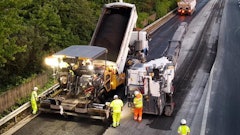
Power sweeping is fast-changing in a variety of ways. Most important of these, given the rapid pace of climate change, centers on the fact that street sweeping has now been shown definitively to be the first line of defense for maintaining water quality given pavement-based runoff. Exhaustive recent studies by Minnesota and Florida both show, conclusively, that pavement-based phosphorus can be removed by a sweeper for up to 150 times less than by the next most viable manner, which is at the end-of-the-pipe with catch basins.
Based on solid data both states are, or soon will be, offering MS4 municipalities significant credits based on their respective studies. When municipalities in those states realize the added value street sweeping provides in terms of permit compliance, there's little doubt that street sweeping frequency – and along with it pollutant removal – will increase across the board. The data indicate that similar financial incentives for increased sweeping should be enacted across the U.S. and around the world.
Another fast-moving technology involves self-driving sweepers. Bucher recently had its all-electric, self-driving CityCat 2020ev model approved for public road use in Singapore. Finland’s Trombia Technologies has a model that sweeps autonomously and without using water for dust suppression. The company’s ‘Trombia Free’ sweeper, due to soon enter the U.S. marketplace, needs no operator and significantly reduces CO2 carbon emissions during operation. And, at least one startup is testing an innovative autonomous retrofit system for Isuzu parking lot sweeper chassis.
In America, Global, Bucher and Elgin now all offer electric and/or hybrid sweeper models and Global even has one powered by hydrogen fuel cell technology. More such models are available in Europe as well as are on the horizon in the U.S.
There’s an old adage that “the only constant is change.” As time goes on, I predict that will be an increasingly apt way to describe the power sweeping industry.





























